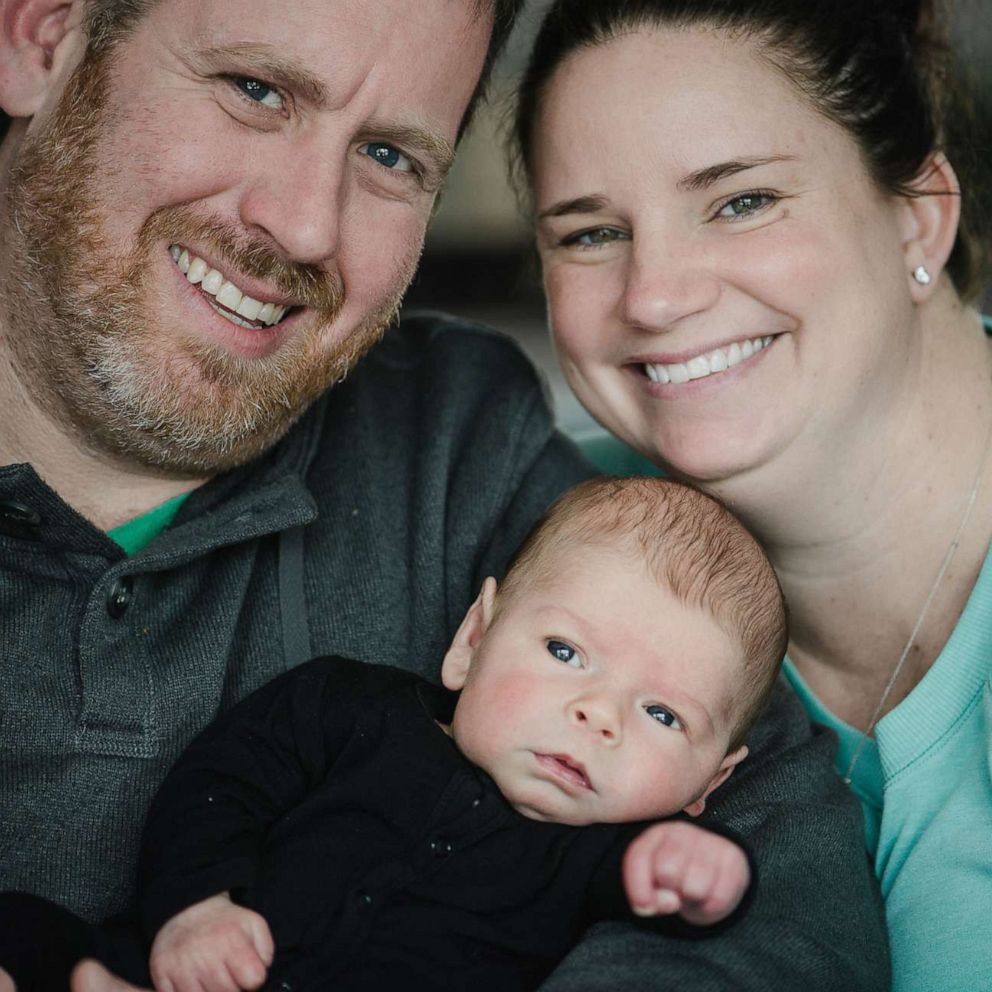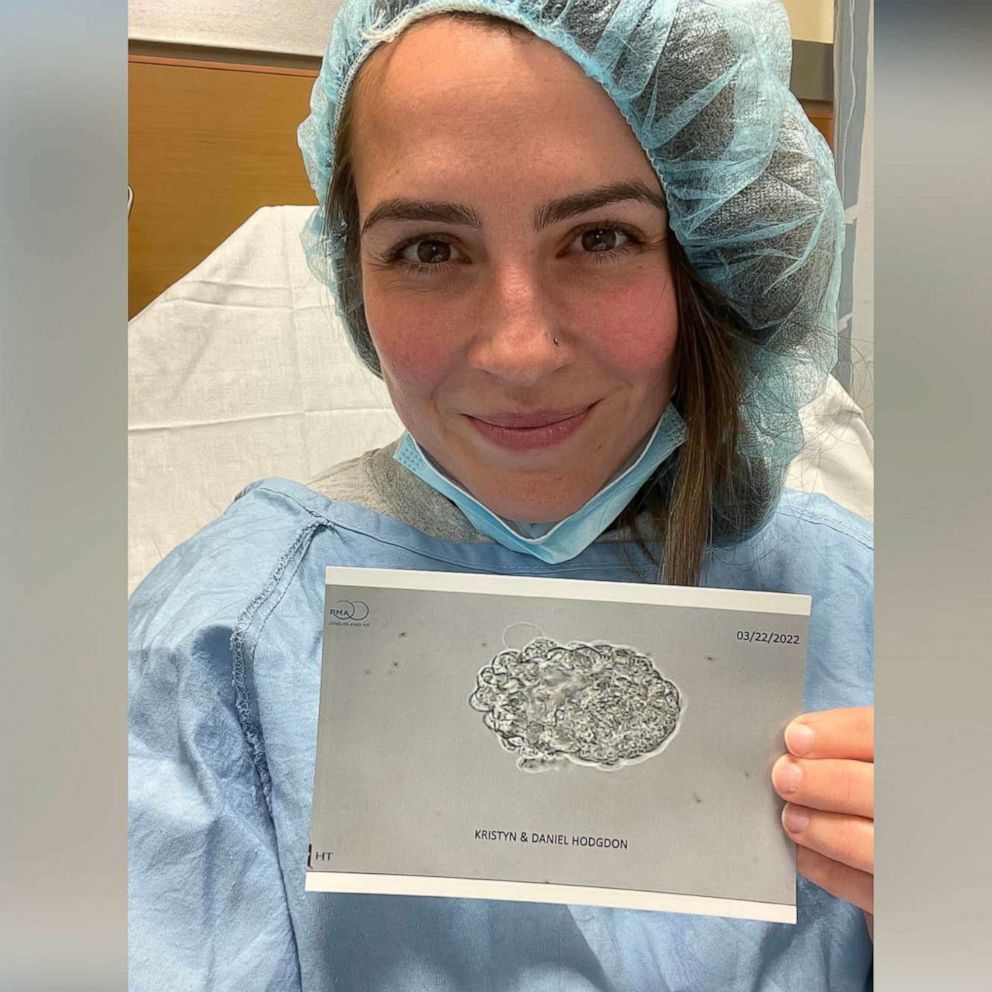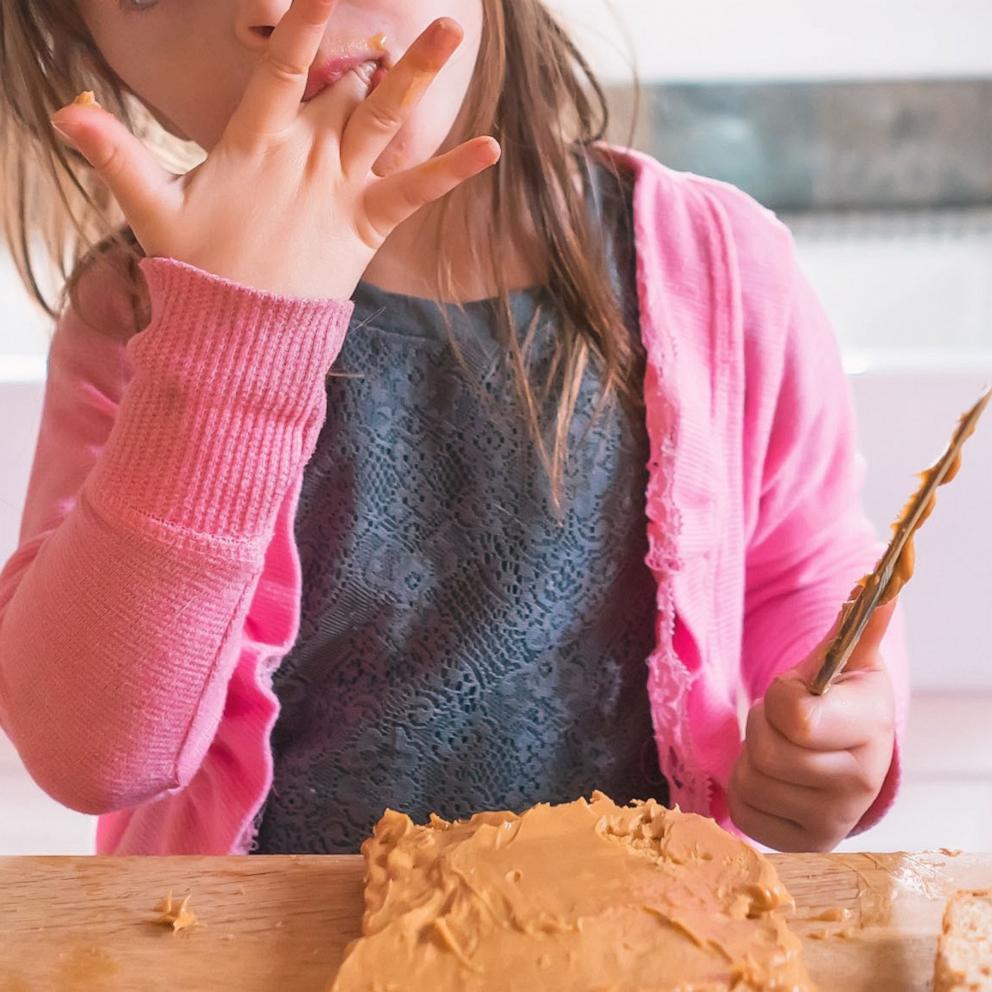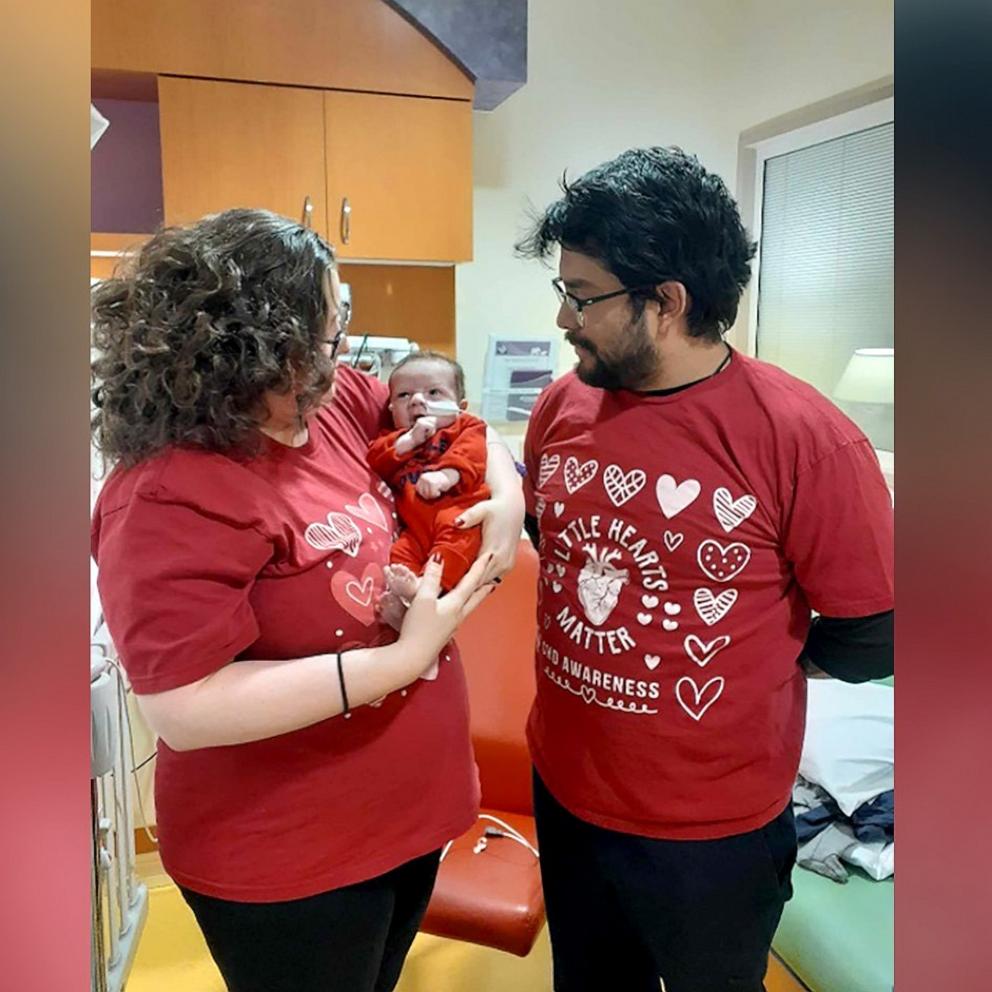With infertility, it took nearly 900 needles to bring my son into the world
Around the world, nearly 1 in 6 adults experience infertility in their lifetime, according to the World Health Organization. For National Infertility Awareness Week, "GMA" is spotlighting infertility stories to help demystify and destigmatize all paths to parenthood.
Erica Kaye, MD, MPH, is a pediatrician and advocate for infertility awareness and fertility treatment coverage. She and her husband live in Tennessee and have three children. Kaye contributed the below essay in recognition of National Infertility Awareness Week.
The day after my wedding, I ceremoniously threw away my birth control. I was ready to be a mom, and I had a plan.
But month after month, my period arrived with crushing decisiveness, and my confidence dissolved. The one-year anniversary of my marriage arrived with a formal diagnosis of infertility and the news that I would need to pursue in vitro fertilization to become pregnant.
[In the IVF process, ovulation is induced and eggs are removed from a patient's ovaries. The eggs are then fertilized with sperm outside of the body, and the resulting embryos are either placed in the patient's uterus in the hope of pregnancy or are stored in a laboratory for future use, according to the American College of Obstetricians and Gynecologists.]
A decade ago, when I started fertility treatments, I had never heard anyone talk openly about IVF.
I felt broken and self-conscious about my failure to become a mom.

Ashamed, I did one secret cycle of IVF after another, hiding my medical treatments from family, friends, and colleagues. I learned the art of disappearing into bathrooms to quietly jab needles into my stomach, sides, and backside, avoiding witnesses and discarding the evidence. I rotated injection sites systematically to find new spots on my stomach and backside that weren't covered in welts or bruises.
In public, I was careful not to show the physical or emotional scars.
While trying to grow our family over the years, we had five pregnancy losses. There were times when I didn't think I could survive the pain. It was uniquely gut-wrenching to go through so much physical and emotional pain to become pregnant, just to lose it all and feel like all of the trauma had been for nothing.

I spent some days curled into the fetal position, tears spilling down my face, willing myself to breathe. It felt like my heart had been ripped from my chest, like I was bleeding out.
But to everyone else, my wounds were invisible. When the bruises faded and the needles were thrown out, it was as if the experience never happened. I struggled to justify my grief to myself and others when I had nothing to show for the losses.
After multiple years, we were lucky to grow our family through IVF and open adoption.
For a while, I closed the chapter on fertility treatments. But something still felt missing, and we decided to try IVF one more time in the hopes of completing our family.
Without asking myself why, I stopped throwing away the used needles and syringes and the empty medicine vials. I think, subconsciously, I was looking for concrete evidence to validate my pain. Maybe I was looking for a way to quantify the physical and emotional weight of infertility. I needed to remember the process and how it felt, even the ugliest parts.
No matter how things turned out, I wanted to be able to look back on the process and see and hold and reckon with the visceral experience.
Our beloved gestational carrier [who carried our third child] was my unconditional partner and cheerleader.
When I sheepishly told her that I was saving my used medical supplies, she immediately started to save her needles and syringes in solidarity with me. The used medical supplies were the evidence of our collective labor.
After my third child, a son, was born, I didn't know what to do with the used supplies.

I wasn't ready to face the corpus and acknowledge its meaning and weight. Instead, I stored it all in my bathroom cupboard, where I could see bits and parts in passing every day.
But as weeks went by, I began to feel less overwhelmed and more curious.
Finally, one afternoon, I lugged out the bins and dumped everything onto the floor. I just wanted to get a sense of the volume at first. But once it was on the ground all around me, I felt pulled to make sense of it. So I started organizing the scattered supplies to tell our story.
Altogether, it took nearly 900 needles to bring our son into the world.
Our gestational carrier was the vessel who surrounded him and supported us all, and her medical supplies encompass the outer two rings. The rest, those at the core, were mine.

Infertility is humbling and painful and hopeful and scary. After years of setbacks, health complications, and many losses, we were lucky. Many others aren't.
According to the Centers for Disease Control and Prevention, about 1 in 5 women of reproductive age in the U.S. suffer from fertility problems. Among married women aged 15 to 49 years, about 1 in 4 have difficulty getting pregnant or carrying a pregnancy to term. For women who know they are pregnant, approximately 10% to 20% end in pregnancy loss.
These are staggering numbers. Odds are that everyone knows someone suffering with infertility or pregnancy loss, whether you know it or not.
In recent years, I've seen more women speaking openly about pregnancy loss within informal gatherings and on social media. But fewer people talk openly about their difficult experiences with fertility treatment.
Going through IVF is brutal, isolating, and desperately lonely. It's a breakneck rollercoaster ride that whiplashes from hope to despair, moment by moment. It's physically, psychologically, and spiritually distressing.
For many, IVF is also financially devastating. Most Americans lack insurance coverage to care for their reproductive issues, and the treatments they need are egregiously cost prohibitive. We could not have afforded to grow our family without the generosity of supportive family members. [In the U.S., the average cost of one IVF cycle can range from $15,000 to $25,000, according to Dr. Jennifer Ashton, ABC News chief medical correspondent and a board-certified OBGYN.]
It shouldn't be this way. Infertility is a medical condition, and everyone should be able to access effective, evidence-based treatments for their illness.
April 23 through 29 is National Infertility Awareness Week. Founded in 1989 by RESOLVE, National Infertility Awareness Week is a public grassroots campaign to reduce stigma and educate our communities about reproductive health and the issues that so many people face when trying to grow their families.
It's time for us to start talking about how difficult it is to go through infertility treatments. There is power in solidarity. It's hard to feel alone when you can physically see what others are going through, alongside you. We also need real stories from real people to galvanize health care professionals and researchers to develop, implement, study, and normalize clinical strategies to better support patients during fertility treatments.
For me, a picture captures a thousand words.
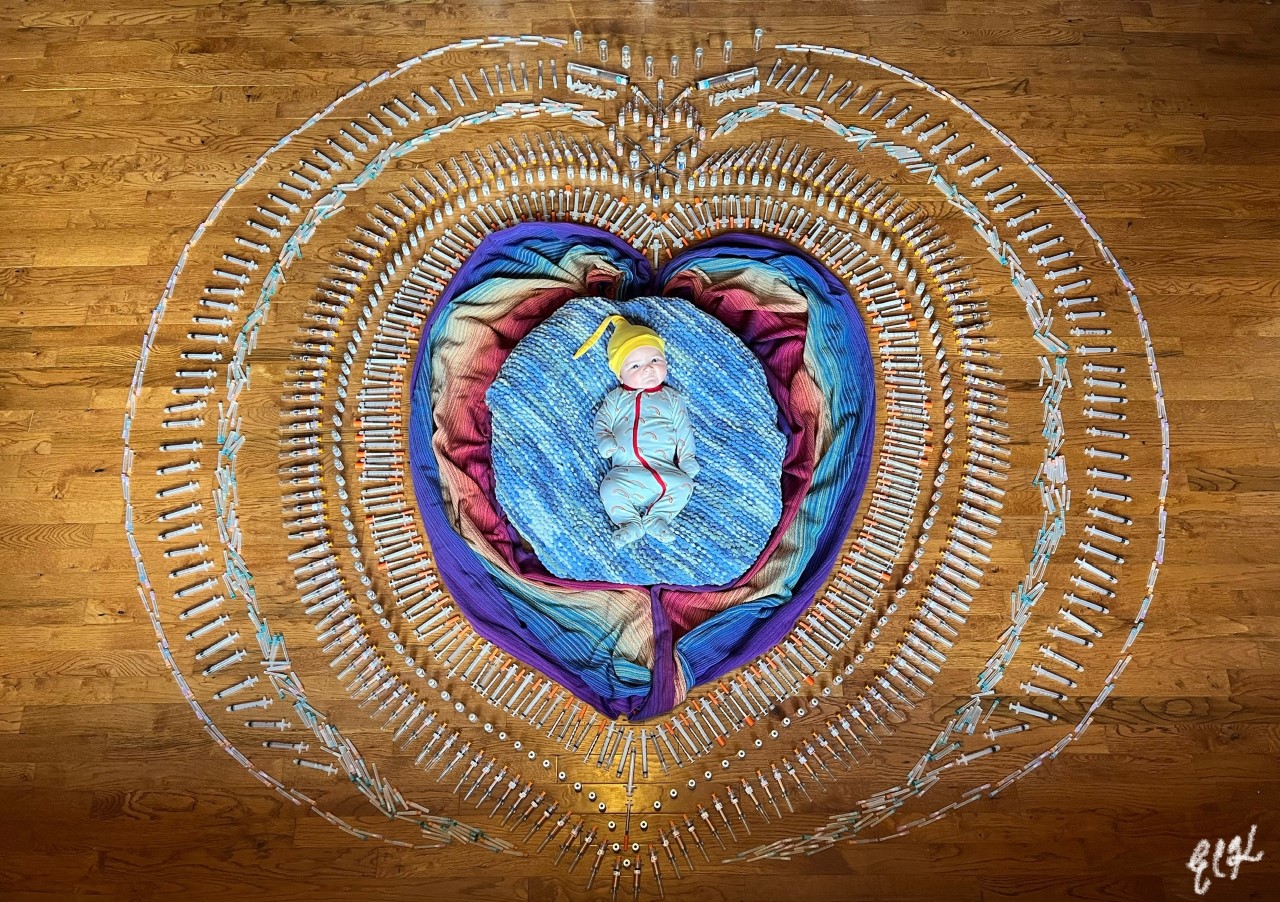
Visualizing the totality of our experience in physical piles on the floor helped me appreciate not only our luck, but also our grit. I'm glad to have tangible relics to honor each raw step of the process towards trying to grow our family.
Truthfully, I don't think infertility is ever really "behind" a person. Like grief, it shapes us and we carry it with us.
But seeing the scaffolding of the journey, in its bare bones, helped me heal. I hope it may offer solidarity and help empower others, too.


